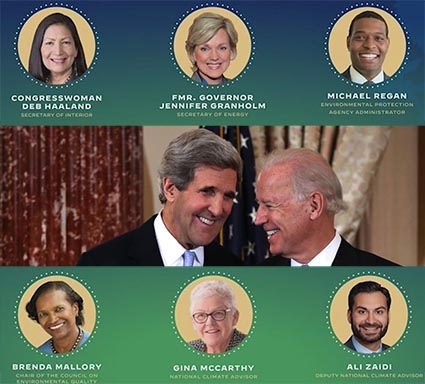(I had originally planned to post this near the beginning of the year, but it hardly seemed appropriate amidst the events of January 6. With the Biden administration now in office, it feels more timely.)
Slightly over a year ago, for my end of 2019 post, I wrote “Can we be hopeful?” In it, I said that, as bad as that year was environmentally, under a president who single-handedly set us back to whatever year ExxonMobil wanted him to, there was room – and need – for seeing the potential for a positive turn in the climate emergency. But that was before massive wildfires, a record-breaking hurricane season, arctic waters that didn’t freeze when they’re supposed to, and numerous floods and heat waves beyond what used to be the norm.
Much of the optimistic viewpoint then was dependent on electing a new president. Any new president.
Perhaps the environmentally horrific events, though they may be overwhelmed in newsworthiness by the COVID-19 pandemic, have served to sway some of the deniers. It’s way too much to hope that they will all be convinced, but we already had a majority of the public onboard; it’s the politicians who have been the most obstructive. Perhaps the further swing in their constituents’ beliefs (I hate when people refer to ‘believing’ in climate change), will overwhelm their fealty to oil industry financial support. But, then again, maybe that’s the EcoOptimist in me.
The gist of that year-old post was that we needed both hope and fear. Fear of what can happen (or is happening) and hope that we can still prevent the worst. It’s a combined carrot and stick, I wrote.
Teaching my first class after Trump’s election in 2016, I barely held back tears, saying that the window on preventing the worst scenario of the climate emergency was closing. (I was also fearful for the immigration status and safety of the many international students in my classes.)
In an earlier draft of this post, pre-inauguration, I had written: while President-elect Biden is not as strong an environmentalist as many of us would have wanted, there’s no comparison to the windmills-cause-cancer malignancy of the outgoing administration. (Trump also said wind turbines are bad because they kill birds, but then authorized oil companies to “inadvertently” kill birds. Hypocrisy and politics seem to go together when they are convenient.)
Editing this delayed post now, just after Biden’s “Climate Day,” his executive orders are wonderfully exceeding our reserved hopes. (As a policy and economics geek when I’m not in my ecodesign role, I especially love that he is eliminating subsidies for fossil fuel companies.)
But is it too late, as I semi-tearfully feared after the 2016 election? Dunno. Some studies say the path past a 1.5° rise is set, that that train has left the station. (The metaphor is appropriate because, like trains, climate change ‘s momentum is hard to slow down.) But I think the mindset it generates is unhelpful because it leaves us with only fatalism and no reason for action. Even if it’s true, we still can affect, if not that perhaps pre-ordained path, the further degree of impact. This isn’t merely EcoOptimism; it’s really the only way to move forward.
So, all in all, we have more reasons to affirmatively answer the question “Can We Be Hopeful?” than we did four years. And far more than we did a year ago.
Raising a glass of organic champagne.

